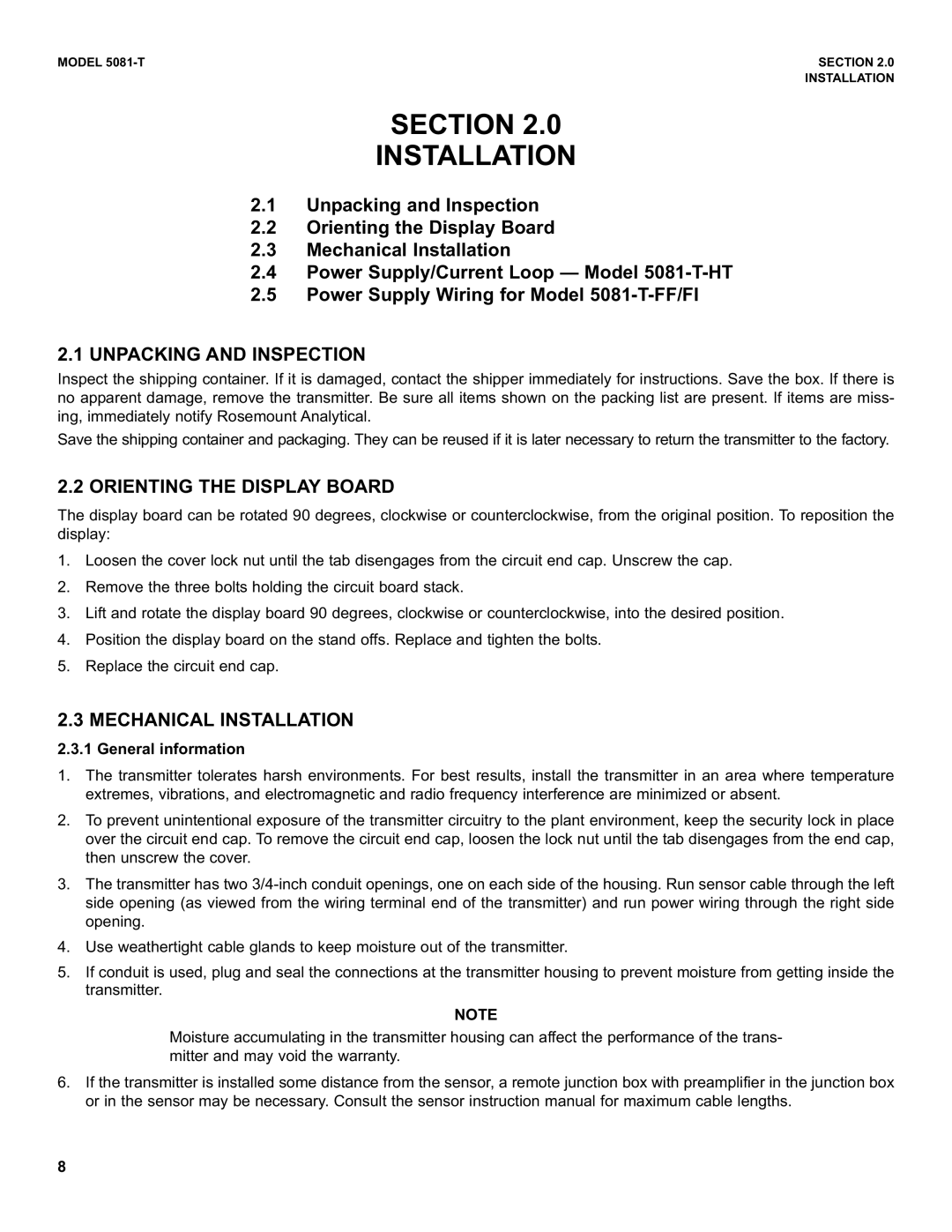MODEL | SECTION 2.0 |
| INSTALLATION |
SECTION 2.0
INSTALLATION
2.1Unpacking and Inspection
2.2Orienting the Display Board
2.3Mechanical Installation
2.4Power Supply/Current Loop — Model
2.5Power Supply Wiring for Model
2.1UNPACKING AND INSPECTION
Inspect the shipping container. If it is damaged, contact the shipper immediately for instructions. Save the box. If there is no apparent damage, remove the transmitter. Be sure all items shown on the packing list are present. If items are miss- ing, immediately notify Rosemount Analytical.
Save the shipping container and packaging. They can be reused if it is later necessary to return the transmitter to the factory.
2.2 ORIENTING THE DISPLAY BOARD
The display board can be rotated 90 degrees, clockwise or counterclockwise, from the original position. To reposition the display:
1.Loosen the cover lock nut until the tab disengages from the circuit end cap. Unscrew the cap.
2.Remove the three bolts holding the circuit board stack.
3.Lift and rotate the display board 90 degrees, clockwise or counterclockwise, into the desired position.
4.Position the display board on the stand offs. Replace and tighten the bolts.
5.Replace the circuit end cap.
2.3 MECHANICAL INSTALLATION
2.3.1 General information
1.The transmitter tolerates harsh environments. For best results, install the transmitter in an area where temperature extremes, vibrations, and electromagnetic and radio frequency interference are minimized or absent.
2.To prevent unintentional exposure of the transmitter circuitry to the plant environment, keep the security lock in place over the circuit end cap. To remove the circuit end cap, loosen the lock nut until the tab disengages from the end cap, then unscrew the cover.
3.The transmitter has two
4.Use weathertight cable glands to keep moisture out of the transmitter.
5.If conduit is used, plug and seal the connections at the transmitter housing to prevent moisture from getting inside the transmitter.
NOTE
Moisture accumulating in the transmitter housing can affect the performance of the trans- mitter and may void the warranty.
6.If the transmitter is installed some distance from the sensor, a remote junction box with preamplifier in the junction box or in the sensor may be necessary. Consult the sensor instruction manual for maximum cable lengths.
8
